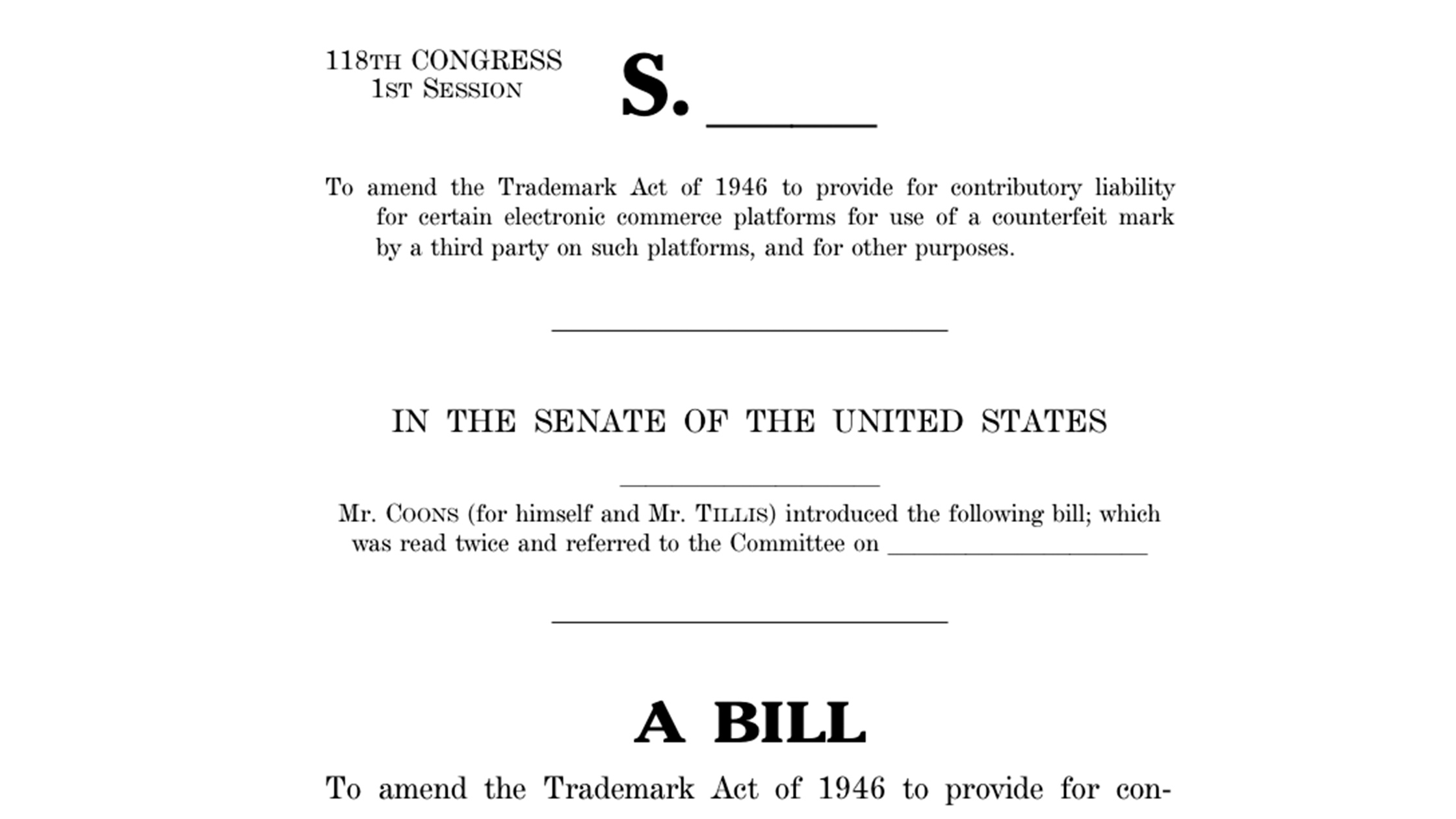The Proposed 2023 SHOP-SAFE ACT Provides Framework for Holding Online Marketplaces Accountable

E-commerce platforms like Amazon and Walmart provide consumers with fast access to millions of products, sometimes within days or hours of ordering. However, despite what many consumers might believe, Amazon and Walmart do not sell most of the items being sold on their respective websites.
Instead, third-party sellers use Amazon and Walmart’s programs (such as “Fulfilled by Amazon”) to store their items in Amazon’s warehouses, access fast shipping, and promote their offers through these marketplaces. Amazon and Walmart place 100% of the burden on the individual sellers (and on the consumers) to ensure the products are safe and genuine, without (legally) taking any responsibility themselves, besides removing items after they are reported as counterfeit.
With the re-introduction of the Stopping Harmful Offers on Platforms by Screening Against Fakes in E-commerce or SHOP SAFE Act of 2023, Congress aims to provide consumer protection to online selling platforms. Under this act, online sellers will be held contributorily liable for failing to screen for third-party sellers and following best practices to prevent sellers from using their platforms to sell counterfeit goods.
In a bold step, this new law will further incentivize such online platforms to apply the proper methods and necessary regulation for their websites to prevent the selling of counterfeit goods.
SHOP SAFE Act would require marketplaces to follow best practices
The SHOP SAFE act allows online sellers to be held liable for the sales of its marketplace users on items ranging from child safety products to electrical devices, or ultimately any item that needs to meet certain safety standards before being sold to the public. To adhere to the new standard of “best practices” under sec. 1114(4)(A), an online platform must:
- Determine that a third-party seller has a registered agent in the United States for service of process
- Properly identify the seller
- Verify the seller’s authenticity of the goods being sold
- Require the seller to enter a conditional contract that the goods being sold are not counterfeit, and if so, they can be sued in a U.S. court
- Adequately display the seller’s business and contact information under its item listings
- Display in listings the country of origin of the goods
- Require sellers to display images of the actual goods being sold and the seller’s permission to use the goods
- Use technology to screen for counterfeit goods before listing them on an online platform
- Expeditiously disable and remove listings that offer counterfeit goods
- Terminate sellers that have reasonably been determined to sell or list counterfeit goods on the online platform
- Prevent terminated sellers from rejoining the online platform
- Provide a system for users to contact infringing sellers upon request
SHOP SAFE Act would significantly change potential liability for Amazon and others
Under this legislation, Amazon and other large e-commerce platforms will be forced to follow extensive best practices to avoid contributory liability for counterfeit products. This is a big risk for businesses like Amazon, who sells hundreds of millions of products and relies of sellers willing to sell products at razor-thin margins to access the vast number of consumers accessing the platform.
These marketplaces will undoubtedly argue that these requirements will raise the administrative costs of onboarding new sellers and raise the bar for small businesses to sell on their platforms. This may increase costs for the end consumer. Further, for each of the above “best practices,” it is easy to see how a seller peddling counterfeit products could easily forge documents and bypass these requirements. Platforms like Amazon would be incentivized to meet the bare minimum set forth under the law to secure “safe harbor” without making it too difficult to sellers to continue to use the platform.
Further, these changes may place a burden on smaller online selling platforms and raise the barrier to entry. The selling of counterfeit goods on large online markets such as Amazon, eBay, or Alibaba, has led to substantial growth for those platforms. Despite the likely harm to the consumer, these sales have propelled these platforms into the economic powerhouses they are today. In the past, these larger markets have willfully turned a blind eye to the sale of counterfeit goods on their platforms, in order to maximize site traffic and growth.
The 2023 version of the SHOP-SAFE Act exempts platforms with annual sales less than $500,000, but it will be hard for new companies to ever be able to truly compete with billion-dollar businesses who got started with minimal regulations and no legal responsibility to protect their consumers. Even these platforms with $500,000 or less in annual sales would lose this exception if they receive 10 or more identifying counterfeit goods that implicate health and safety.
Proposed law would protect consumers from unscrupulous online merchants
In the past, large commercial online platforms have reaped the benefits of counterfeit goods, while consumers paid the price. Far too often, these platforms have allowed unchecked third-party sellers to use their websites and push unsafe or incorrect items on the general consumer. The enactment of the SHOP SAFE act will help to remedy this system as well as establish a means to prevent future harm to consumers.
Do you need assistance with a trademark matter?
Contact an Attorney Today